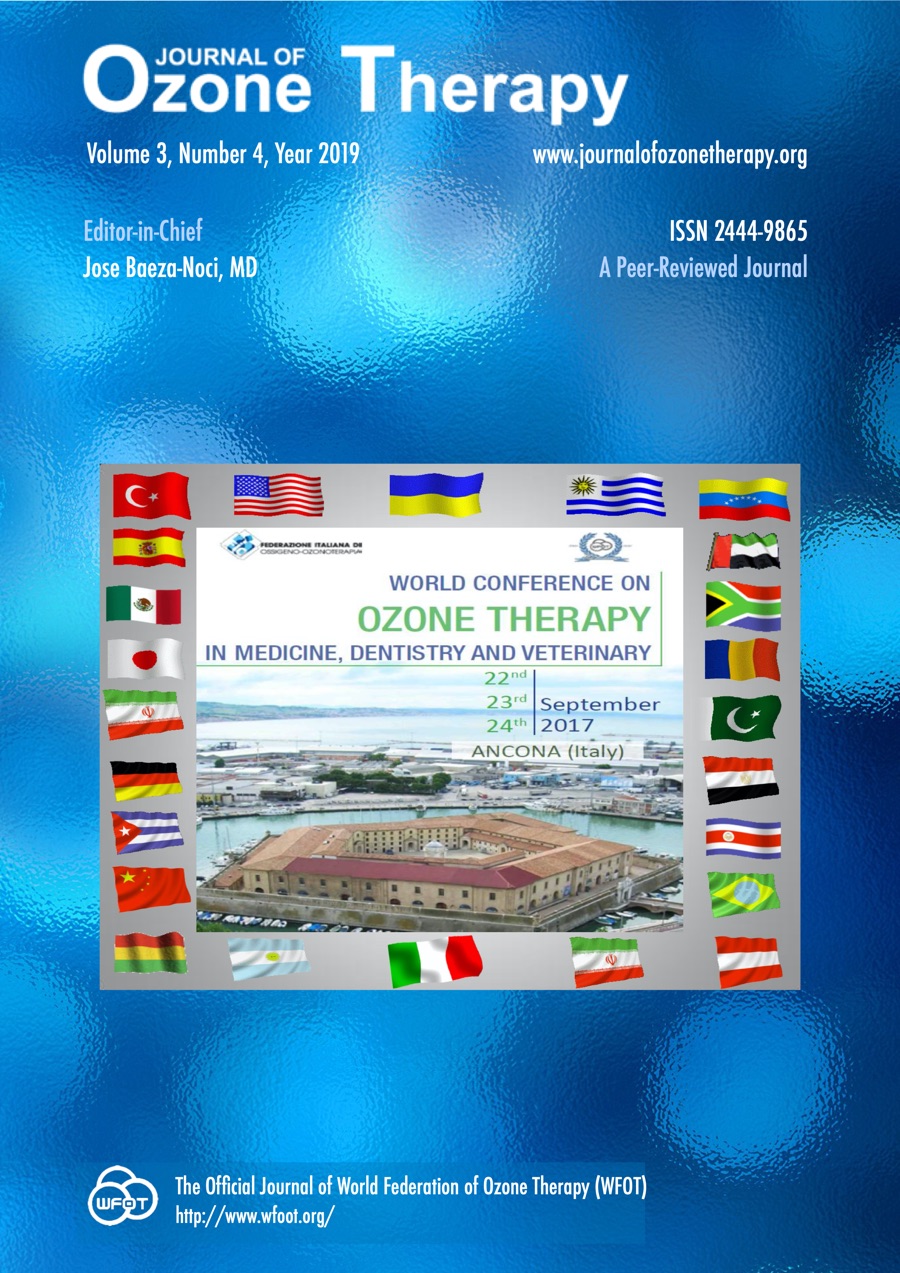Ozone Therapy in Idiopathic Carpal Tunnel Syndrome. Biochemical, Neurophysiological and Clinical Aspects [abstract]
DOI:
https://doi.org/10.7203/jo3t.3.4.2019.15530Palabras clave:
carpal tunnel syndrome, ozone therapy Resumen
Resumen
PURPOSE: Idiopathic Carpal Tunnel Syndrome (CTS) is the most common entrapment neuropathy.
The aim of the paper was to design a prospective study to evaluate clinical and neurophysiological outcome following Ozone Therapy .
We also focusing the attention on the evidences concerning the role of Subsynovial Connective Tissue (SSCT )in the pathogenesis of CTS and the ozone pre-conditioning effects linked to pain pathways and to fibrosis induced by Ischemia-Reperfusion Injury.
MATERIALS and METHODS: Thirty-one patients, aged between 36 and 86 23 women and 8 men), were stratified clinically by Boston Carpal Tunnel Questionnaire (B.C.T.Q.) and Neurophysiologically by Padua’s Gravity Scale classifying patients into five Electro-myographic categories (Minimal, Slight, Moderate, Severe and Extreme) . The mean symptom duration was also recorded.
The patients included in the B.C.T.Q. underwent diagnostic neurophysiological tests, strictly standardized in stimulation parameters, electrodes distances and skin temperature, before and after treatment.
The Ozone Therapy was performed by injecting 4 ml of O3-O2 mixture at 10 mcrg/mL concentration under the transverse carpal ligament twice a week for eight sessions.
RESULTS: We compared the B.C.T.Q. scores and the neurophysiological parameters obtained before and after O2-O3 treatment: the improvement of symptoms was significantly greater than the improvement of motor and sensory nerve conduction.
The highest clinical improvement degree was found in patients classified in Slight and Moderate Groups.
DISCUSSION: Chemical mediators, neo-angiogenesis and Ischemia-Reperfusion Injury lead to oxidative stress and non-inflammatory fibrosis that play a central role at various stages in CTS pathogenesis that can be recognized by clinical and neuro-physiological tests.
Further studies have to be carried out to better understand these relationships and optimize timing of Ozone Therapy.
 Descargas
Descargas
 Citas
Citas
Alfonso C, Jann S, Massa R, Torreggiani A. Diagnosis, treatment and follow-up of the carpal tunnel syndrome: a review. Neurolog Sci. 2010;31(3):243-252. doi: 10.1007/s10072-009-0213-9.
Bonetti M. Oxygen-Ozone Therapy: Brief historical review and mechanism of action. Int J Ozone Ther. 2007;6(2):143-144.
Chammas M, Boretto J, Burmann LM, Ramos RM, Dos-Santos-Neto FC, et al. Carpal tunnel syndrome – Part I (anatomy, physiology, etiology and diagnosis). Rev Bras Ortop. 2014;49(5):429-36. doi: 10.1016/j.rboe.2014.08.001.
Descargas
Publicado
Cómo citar
-
Resumen466
-
PDF 251
Número
Sección
Licencia
Journal of Ozone Therapy publica bajo la licencia Creative Commons Attribution-NonCommercial 4.0 International License.




